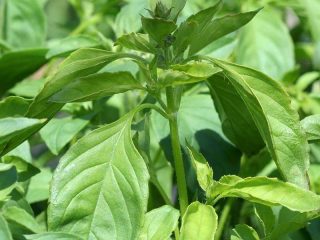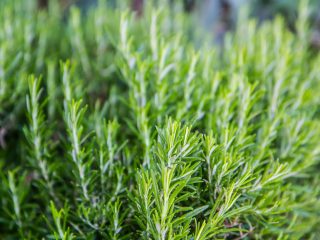Content
Microgreens are young shoots of greens, vegetables and root vegetables, characterized by a maximum concentration of substances beneficial to health. These “mini-vegetables” and “mini-herbs” are ideal for growing on a windowsill. No “advanced” gardening skills are required to grow them. And for those who are afraid of “dirt” in the kitchen, you can plant microgreens at home without soil.
Benefits of growing microgreens without soil
There are significant advantages to planting microgreens without soil:
- A large selection of materials that allow you to replace the “classic” substrate. Everything you need to plant microgreens at home without soil can be found either in your kitchen or at your local gardening store.
- Guaranteed pest free. Soil, especially taken from your own garden, almost always contains eggs and larvae of pests that can destroy the harvest of “mini-plants” and “spread” to indoor flowers. Without soil there is no risk of insect damage.
- Cleanliness on the windowsill.If you plant microgreens in the “traditional” way, the soil from the pots will inevitably spill onto the windowsill; regular cleaning is required. Without soil, the kitchen will be much cleaner and tidier.
- Ability to control the condition of microgreens. Without soil, you can constantly monitor the appearance of the roots and notice the development of fungal infections in time. If you plant seeds in the soil, this is not possible.
- High yield. Microgreens are completely edible, including the roots.

Without soil, the roots remain clean and can be eaten; and if you plant seeds in the soil, washing them later is problematic
How to grow microgreens at home without soil
You can grow microgreens yourself without soil at home, without even minimal gardening experience. Preliminary preparation is limited to choosing an alternative to ordinary soil and purchasing suitable seeds.
On paper towels
Before planting microgreens without soil on paper napkins or towels, disposable handkerchiefs, toilet paper, you need to thoroughly moisten and squeeze out the “substrate”. Then proceed like this:
- Line the bottom of a plastic container with 2-3 layers of damp paper. Drainage holes are first made in it.
- Plant the seeds evenly if possible.
- Moisten moderately by spraying from a fine spray bottle.
- Close the lid tightly, turning the container into a greenhouse, and put it in a dark, warm (24-28 ° C) place.
- Ventilate the plantings daily for 10-15 minutes, getting rid of accumulating condensation.
- After the shoots appear, move them to light and remove the lid. Reduce the content temperature to 20-23 °C.

When growing on paper, seeds and seedlings should not float in water
On cotton wool or cotton pads
In addition to pieces of cotton wool and cotton pads, microgreens without soil can be planted on foam rubber or padding polyester. The algorithm of actions is exactly the same as in the case of paper towels or napkins. The only difference is that before sowing it is recommended to soak the seeds for 15-20 minutes in plain water. Some use natural biostimulants:
- aloe juice;
- potato juice;
- succinic acid;
- honey diluted with water
Cotton wool and similar materials retain water better than thin absorbent paper. Therefore, you can spray microgreens, if you plant them without soil in this way, less often - 1-2 times a day.

In addition to pieces of cotton wool and cotton pads, microgreens without soil can be planted on foam rubber or padding polyester.
On gauze
In principle, it is possible to plant microgreens in gauze without soil, but then it is not very convenient to harvest - the roots of the seedlings get tangled in the cells and break. It is better to use disposable medical or kitchen wipes made of synthetic non-woven material.

The growing process does not change compared to paper towels or cotton pads
On hydrogel
Hydrogel has a high moisture capacity, so if you plant microgreens without soil in these granules or “balls,” you can water them less often. The hydrogel is first “saturated” with moisture by holding it in a container with clean, cool water for 10-12 hours. During this time, the granules swell, almost doubling in volume.
How to board:
- Fill the container with hydrogel granules.
- Spread the grains over the surface of the “substrate”, deepen them by 3-5 mm.
- Close the lid and wait for the shoots to appear in the greenhouse.
- Move the container to a well-lit place, slightly lower the temperature.

Hydrogel for growing microgreens is rarely used, although it is very convenient
In the bank
Microgreens look strange if you plant them without soil in an ordinary glass jar, but this method allows you to get a good harvest. You shouldn’t take an excessively large jar; 0.8-1 liters is enough.
How to grow microgreens on a windowsill without soil in a glass jar:
- Pour the seeds inside the container and fill with cool, clean water. Wait a few days until they swell. The water needs to be changed daily. Sometimes solutions of natural biostimulants are used instead.
- Cover the neck with gauze, secure with an elastic band, and put on a special lid with a fine mesh. Drain off any remaining water.
- Fix the jar over the drainage tray in a position with the neck down at an angle of about 25-30°. It should be placed immediately in a well-lit place, without waiting for the seeds to germinate.
- Every day (in hot weather, up to 2-3 times a day), turn the container over and rinse the seedlings with water, draining the excess onto a tray.

It is imperative that there are no labels or traces of glue on the jar that would prevent normal access of light to the seedlings
On linen or jute rugs
These rugs are made from environmentally friendly natural material. Accordingly, if you plant microgreens in them without soil, their health benefits will not be affected in any way.
The process of sowing and growing is not complicated:
- Cut a “backing” from the mat to the size of the bottom of the container.
- Soak the “substrate” in clean cool water for about an hour and a half so that the fibers are saturated with moisture. Hang briefly, allowing excess water to drain.
- Line the bottom of the container with a substrate, plant microgreen seeds, and sprinkle with water from a spray bottle.
Then they follow the general algorithm. You will have to moisten the mats daily or twice a day.

Roots growing through a rug are sometimes impossible to “untangle” from it.
On vermiculite and agroperlite
They are small granules made of synthetic, chemically neutral materials, “saturated” with air bubbles. They have good moisture capacity, although they are inferior in this indicator to hydrogel.
Algorithm of actions:
- Pour the material chosen for planting microgreens without soil into the container, filling it about 2/3 full. To fill with water.
- After 20-30 minutes, drain off excess moisture, sow seeds, spreading them over the surface. You can deepen them by 1-2 mm, but this is not necessary.
- Cover with a lid, glass, and cling film. Remove the “greenhouse” to a dark, warm place.
- After waiting for the seedlings to appear, remove the shelter and adjust the conditions.

Agroperlite and vermiculite are actively used in gardening and home floriculture; microgreens can also be planted in them without soil
In the sprouter
A design specially created for planting microgreens without soil. It consists of a plastic tray, a mesh with small cells and a hermetically sealed transparent lid.
Use it like this:
- Pour clean water into the tray.
- Install the mesh so that there is 2-3 mm between it and the surface of the water.
- Place the seeds on the mesh and cover with a lid. Place the sprouter in a dark, warm place.
- As soon as shoots appear, rearrange the container.

As water evaporates, water is added to the pan - the seedlings do not require any further care
Possible problems
Those wishing to plant microgreens without soil should take into account that a regular substrate is more moisture-intensive than almost any “non-traditional” one. Therefore, the seedlings will have to be watered more often. In addition, they lack the “support” provided by the soil and are easier to damage or break.
Taking these nuances into account, any microgreens are an almost problem-free crop to grow. Her development cycle is very short, so she gets sick extremely rarely. The only thing you might encounter if you plant it without soil is mold.
Possible reasons for its appearance:
- too frequent and/or excessive watering;
- neglect to disinfect growing containers;
- planting seeds of “dubious” origin or collected independently without pre-treatment;
- excessive “crowding” in the container, dense sowing;

Mold can be caused by too much light.
Eating microgreens instead of the expected health benefits can cause poor health. The problem is related to the wrong choice of crops. Plants that have inedible seedlings cannot be planted as microgreens. These are any nightshades (tomatoes, eggplants, bell peppers) and beans. And pumpkin seedlings are very bitter.

In order to be sure not to make a mistake with the choice of planting material, it is recommended to purchase special seeds
Conclusion
The development cycle of “mini-vegetables” and “mini-greens” is very short, so you can plant microgreens at home without soil. Even in an “alternative” substrate, plant seeds will have enough “resources” for sprouting; the main thing is to provide them with optimal conditions for development and proper watering. Recently, the cultivation of microgreens has become a real food trend, not least because caring for plantings is extremely simple. And if you grow it without soil, you are guaranteed to avoid “dirt” on the windowsill and get a harvest faster.








